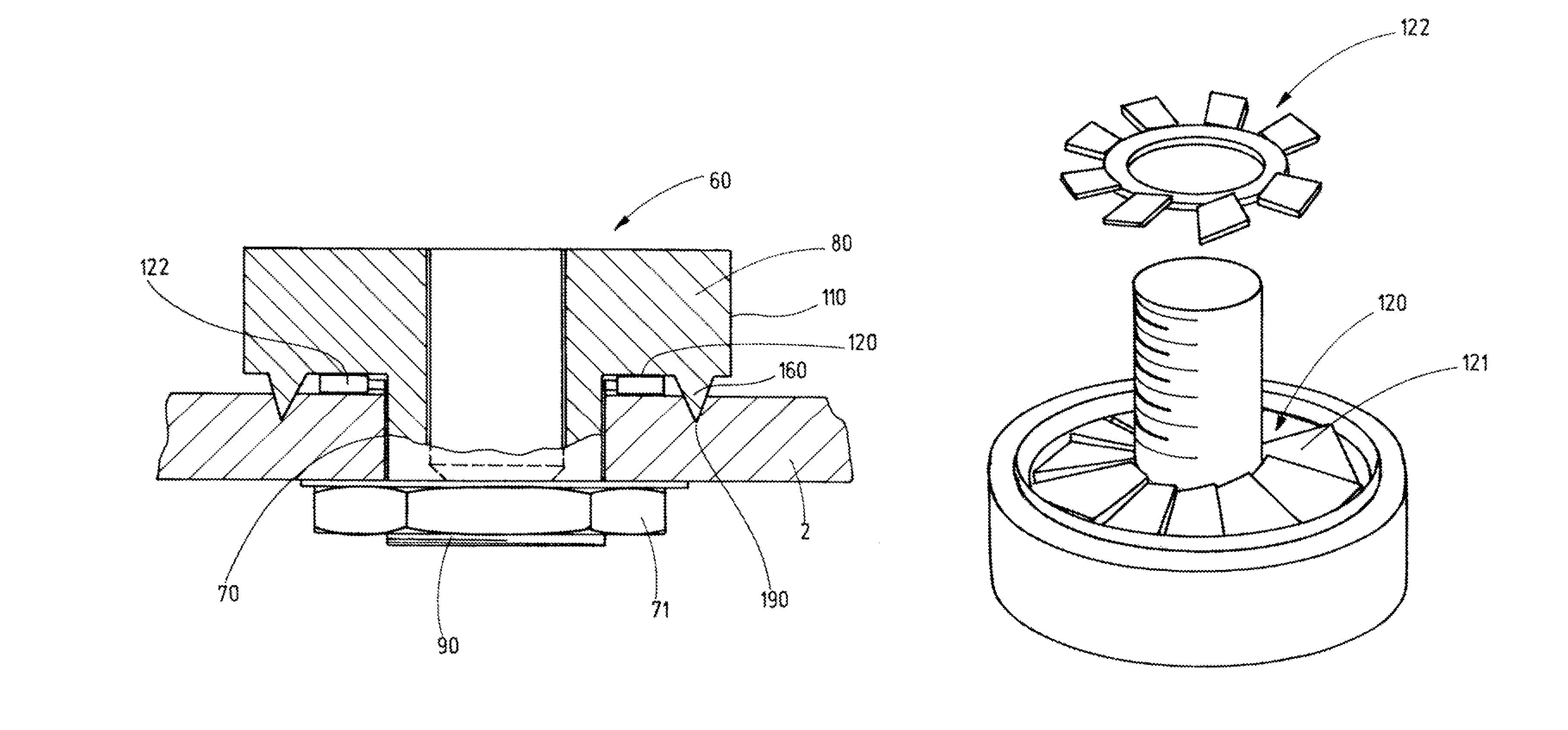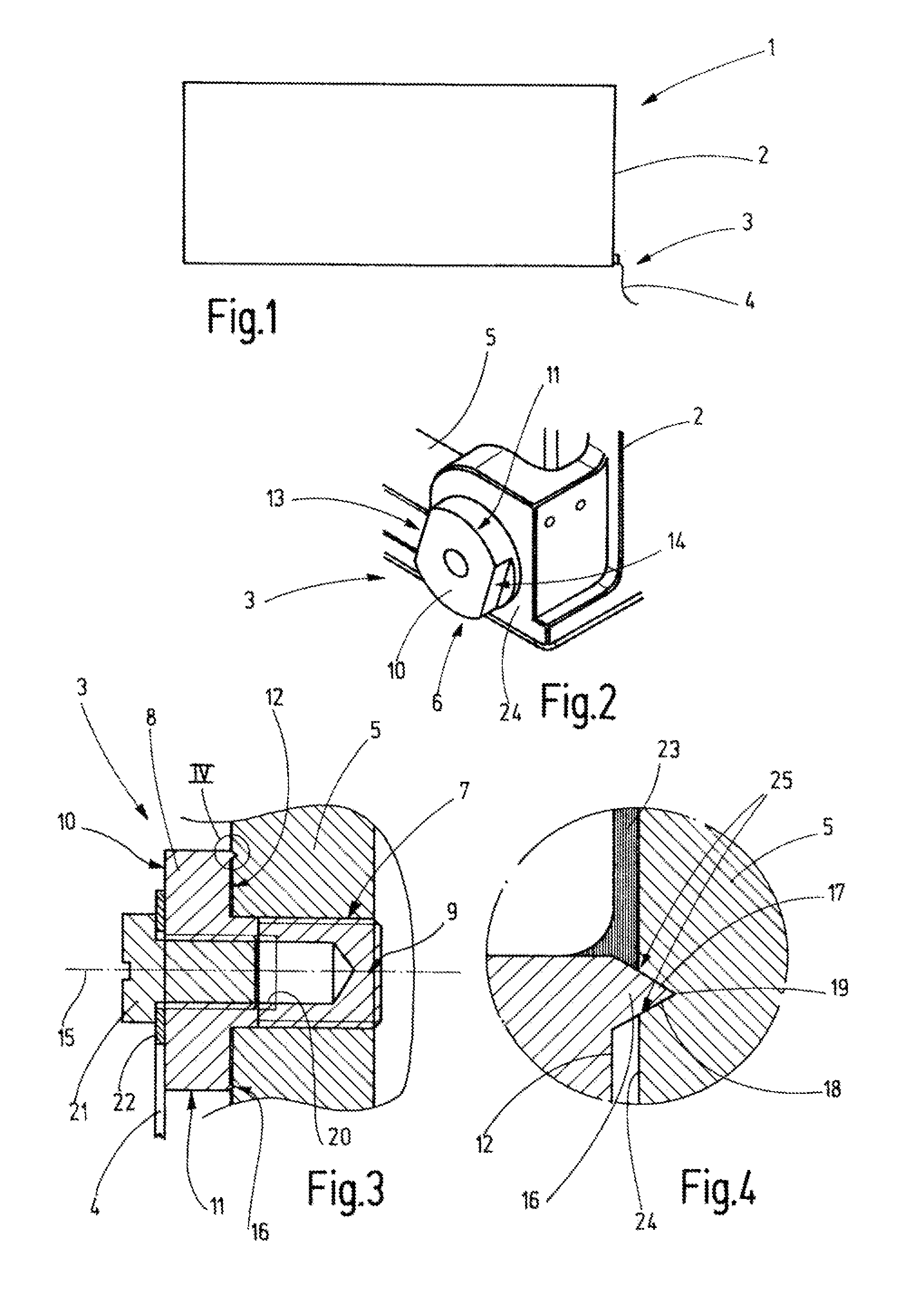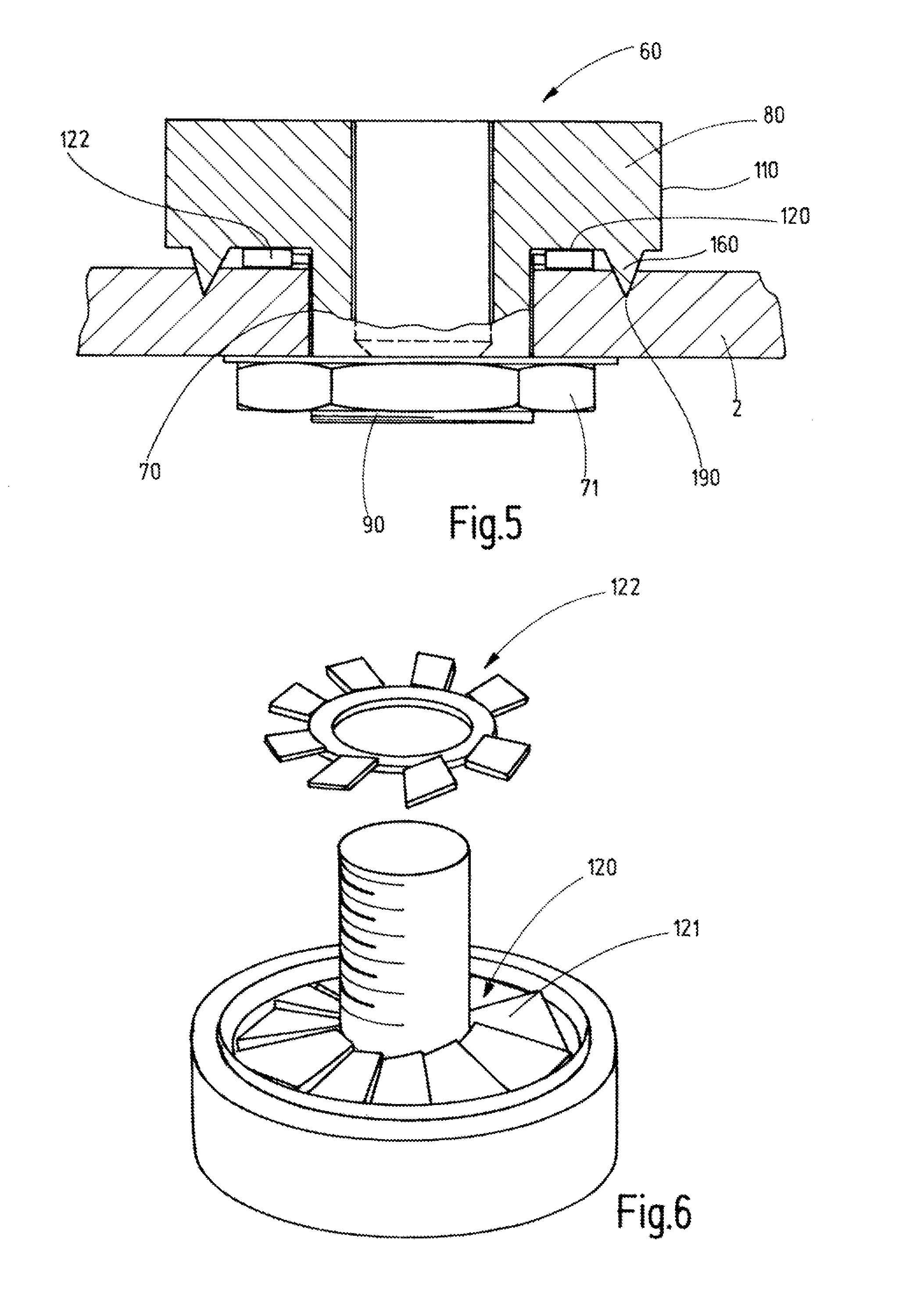Electrical connector element
a technology of electrical connectors and elements, applied in the direction of connection contact members, contact members penetrating/cutting insulation/cable strands, coupling device connections, etc., can solve the problem that the bore does not provide any channel from outside to the interior of the frame or housing, and achieve the effect of long-term reliable electrical connection
- Summary
- Abstract
- Description
- Claims
- Application Information
AI Technical Summary
Benefits of technology
Problems solved by technology
Method used
Image
Examples
Embodiment Construction
[0024]FIG. 1 illustrates an electrical apparatus 1 which may be e.g. a computer, a radio or any other electronic device. It may be part of the equipment of a civil or military vessel or aircraft or land-based vehicle. It may be also part of stationary equipment for civil or military use. In particular, apparatus 1 may be used in chemically aggressive, e.g. corrosion environment. Apparatus 1 comprises a housing 2 comprising an electrical ground connector 3. Ground connector 3 electrically connects a ground lead 4 to the housing 2.
[0025]FIG. 2 illustrates details of the portion of casing 2 on which the ground connector 3 is mounted. A frame 5 may be provided in or around the casing 2. The casing 2 and / or the frame 5 may be made of aluminum or any other metal. In particular, casing 2 and / or frame 5 may be made of a light weight material prone to corrosion.
[0026]The ground connector 3 comprises an electrical connector element 6 which is inserted into a hole 7 provided in the casing 2 or...
PUM
 Login to View More
Login to View More Abstract
Description
Claims
Application Information
 Login to View More
Login to View More - R&D
- Intellectual Property
- Life Sciences
- Materials
- Tech Scout
- Unparalleled Data Quality
- Higher Quality Content
- 60% Fewer Hallucinations
Browse by: Latest US Patents, China's latest patents, Technical Efficacy Thesaurus, Application Domain, Technology Topic, Popular Technical Reports.
© 2025 PatSnap. All rights reserved.Legal|Privacy policy|Modern Slavery Act Transparency Statement|Sitemap|About US| Contact US: help@patsnap.com



